It looks like you're using an Ad Blocker.
Please white-list or disable AboveTopSecret.com in your ad-blocking tool.
Thank you.
Some features of ATS will be disabled while you continue to use an ad-blocker.
share:
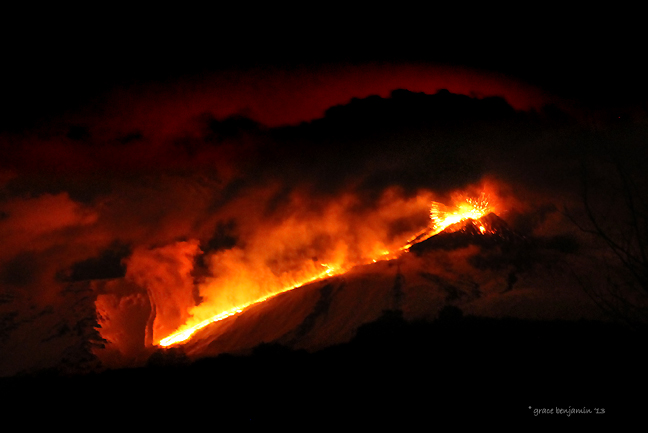
Lava flow hazards at Mount Etna: constraints imposed by eruptive history and numerical simulations
Depending on their intensity and position, volcanic eruptions at Mt. Etna (Sicily, Italy, Fig. 1) have the potential to cause significant social and economic damage.
Etna is characterized by persistent activity from summit craters, consisting of degassing and explosive phenomena associated with fast-moving lava flows1, 2, and recurrent effusive eruptions from vents located on the flanks of the volcano, producing lava flows that can extend for several kilometers.
In future eruptions, one can expect to see one or the other of these eruptive types. The geological record suggests that summit eruptions are somewhat more probable than flank. However, both summit and flank eruptions are likely to produce lava flows, and these are the greatest hazard posed by Mt. Etna to inhabited areas.
Over the last 400 years, the most destructive eruption occurred in 1669 when ~1 km3 of lava was erupted in about four months, producing a 17.3 km long tube-fed lava flow field that destroyed several villages and part of the city of Catania5.
In the last century, the town of Mascali was almost completely destroyed by lava flows in 1928, and the towns of Fornazzo, (S’Alfio is a bit north east of Fornazzo), Randazzo, and Zafferana Etnea were threatened in 1979, 1981, and 1992, respectively.
Recently, tourist facilities in the summit area have been extensively devastated by the 2001 and 2002–2003 lava flow-forming eruptions9, with serious damage to the local economy.
Sant'Alfio local map
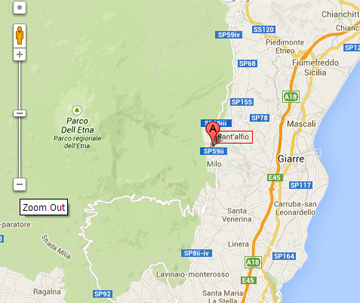
Figure 1: Volcano-tectonic map of Etna, showing the spatial distribution of main faults and eruptive fissures produced by flank eruptions in the last 2 ka.
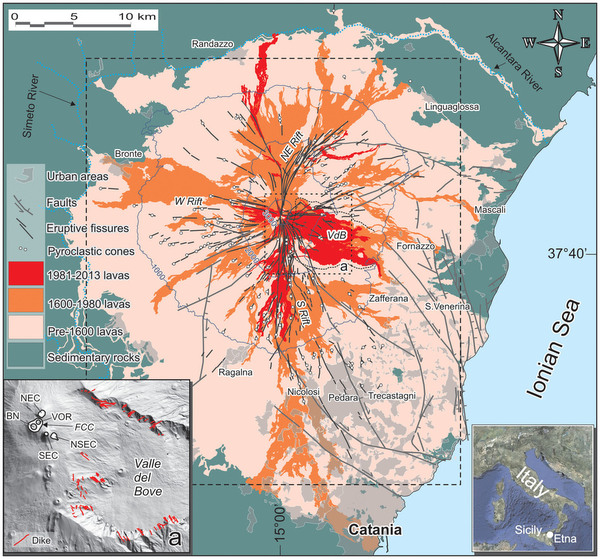

Figure 3: Hazard map by lava flow inundation at Mt. Etna, based on 28,908 simulations of lava flow paths starting from 4,818 different potential vents.
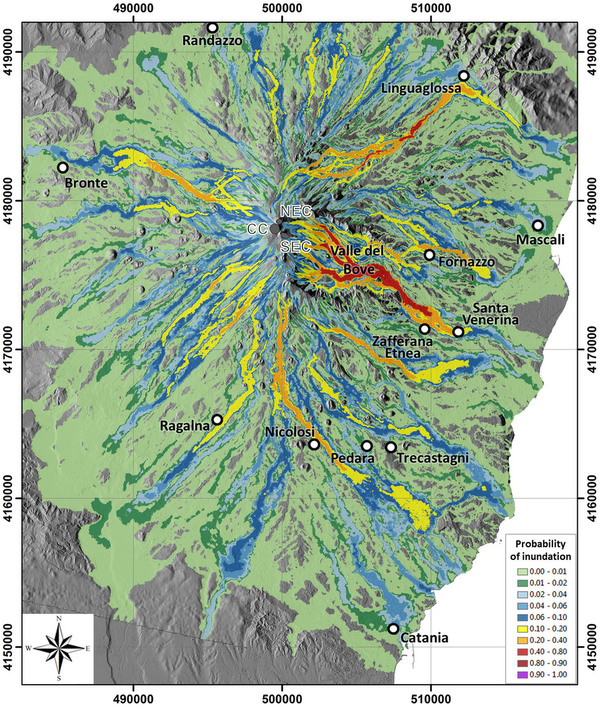
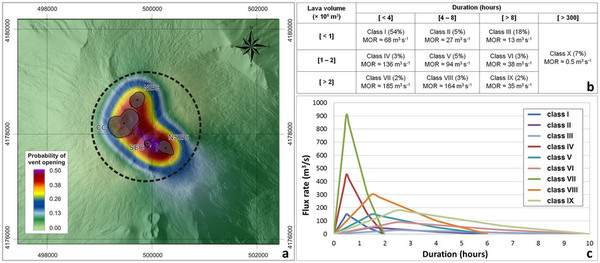
Figure 5: Hazard map for lava flow inundation at Etna's summit area.
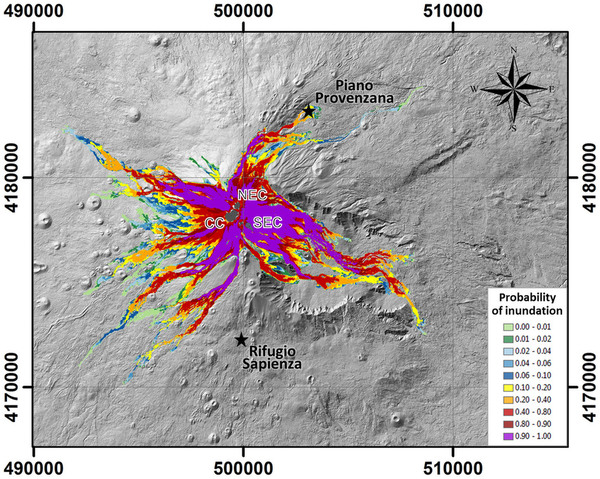
NOTE: Per T&C I’ve not reproduced the article in full (even though I have permission). So PLEASE go to the link and read on! There's such a goldmine of incredible information a great deal of which I couldn't explain if I tried! (The math is daunting!) Visit the link, learn and enjoy!
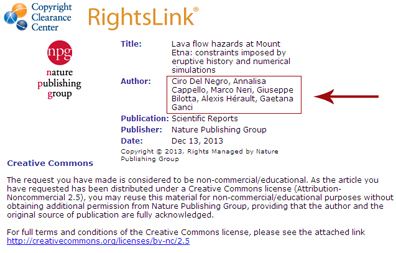
peace
edit on 5-1-2014 by silo13 because: pic fix
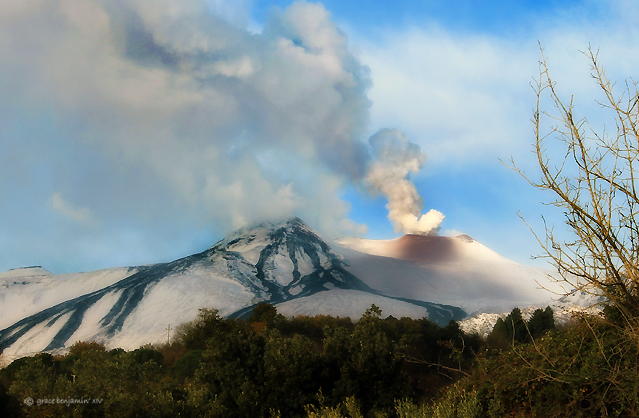
Ohhhhhh what IS she thinking this morning?
Eye on the graphs...
peace
reply to post by silo13
Stay safe - a lot of us are watching your info -
Thanks so much for your invaluable info.
God bless all of you there.
Stay safe - a lot of us are watching your info -
Thanks so much for your invaluable info.
God bless all of you there.
reply to post by silo13
Uuugh...what a "morning after the night before face" Etna has in your last picture!
Like streaky mascara down her cheeks!
Rainbows
Jane
Uuugh...what a "morning after the night before face" Etna has in your last picture!
Like streaky mascara down her cheeks!
Rainbows
Jane
reply to post by angelchemuel
I laughed so hard when I read your post! I was thinking along the same lines after taking the capture. I asked myself ‘I wonder what a Vulcanessa takes for a hangover’!
She’s much calmer now - very little output - 'feels' quiet...
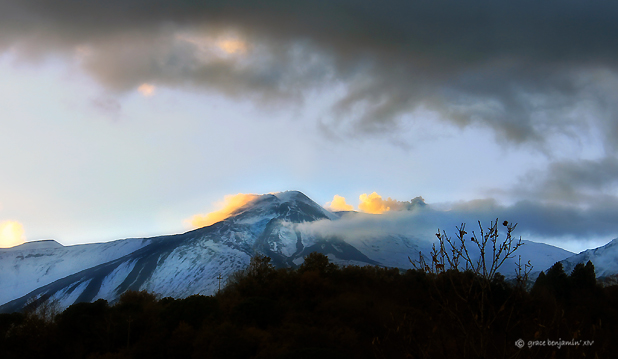
First false alarm of the year!
peace
I laughed so hard when I read your post! I was thinking along the same lines after taking the capture. I asked myself ‘I wonder what a Vulcanessa takes for a hangover’!
She’s much calmer now - very little output - 'feels' quiet...

First false alarm of the year!
peace
edit on 6-1-2014 by silo13 because: pic add
reply to post by silo13
Is that the crater that you mentioned in your other thread? I think Westcoast had asked about it and you said that you've only seen steam coming from it in the past?
Glad it's quieted back down now.
Is that the crater that you mentioned in your other thread? I think Westcoast had asked about it and you said that you've only seen steam coming from it in the past?
Glad it's quieted back down now.
reply to post by silo13
Maybe she has a Lava Mary. I laughed when you wrote your post
as I looked at the photo I can see Vulcanessa's face right there
on the side, like the man in the moon...LOL!
Cheers
Ektar
Maybe she has a Lava Mary. I laughed when you wrote your post
as I looked at the photo I can see Vulcanessa's face right there
on the side, like the man in the moon...LOL!
Cheers
Ektar
reply to post by Ektar
I was happy to read your post.
Staring at Silo's photo, I was thinking I must be the only kooky person to see "Vulcanessa's" face in the side of the mountain.
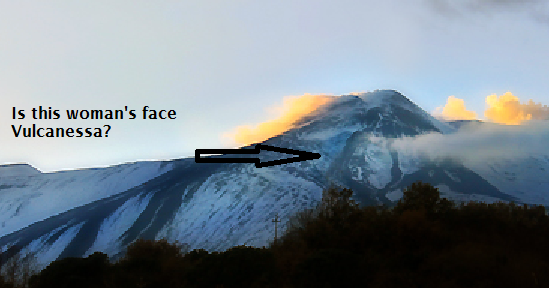
I was happy to read your post.
Staring at Silo's photo, I was thinking I must be the only kooky person to see "Vulcanessa's" face in the side of the mountain.

reply to post by Olivine
Spot on Olivine! I'm glad I'm not the only one. Pretty funny since
she has a name & she showed up for the party,
Cheers
Ektar
Spot on Olivine! I'm glad I'm not the only one. Pretty funny since
she has a name & she showed up for the party,
Cheers
Ektar
WOW, JUST WOW!!!!!!
I sat and looked at the picture and thought "Am I seeing what I'm seeing?" I even adjusted my screen.
I'm so glad everyone else saw it too.
And she has a name
I sat and looked at the picture and thought "Am I seeing what I'm seeing?" I even adjusted my screen.
I'm so glad everyone else saw it too.
And she has a name
That. Is. Freaky.
Natural as can be - but still - I guess seeing things in burnt toast or a trunk of a tree is one thing but on a VOLCANO! LOL!
She's changed again of course so maybe we did get the only Lava Mary EVA!
After putting on that face she's quiet and not even a puff a steam.
Peace
Natural as can be - but still - I guess seeing things in burnt toast or a trunk of a tree is one thing but on a VOLCANO! LOL!
She's changed again of course so maybe we did get the only Lava Mary EVA!
After putting on that face she's quiet and not even a puff a steam.
Peace
You know this is when I really feel like I’m failing. My camera can’t catch the colors and my words lack the description and eloquence to
describe what I’m seeing.
Etna’s ‘large old crater’ (on the right of the pictures) continues to ‘put out’ this very strange almost ‘pink’ colored ash. Ashes of roses I’d have to say (but that description I stole that from the Thornbirds).
The ‘new’ crater on the north-east and to the south side? Billowing white steam.
The contrast is breathtaking and unsettling at once.
I wonder if the ‘old’ crater is clearing her throat for a ‘real’ eruption including lave which has not been seen for ages? Whatever is happening she’s definitely working on something.
But what?
I’ll try a pic later - if the sun is right and etc etc etc.
peace
Etna’s ‘large old crater’ (on the right of the pictures) continues to ‘put out’ this very strange almost ‘pink’ colored ash. Ashes of roses I’d have to say (but that description I stole that from the Thornbirds).
The ‘new’ crater on the north-east and to the south side? Billowing white steam.
The contrast is breathtaking and unsettling at once.
I wonder if the ‘old’ crater is clearing her throat for a ‘real’ eruption including lave which has not been seen for ages? Whatever is happening she’s definitely working on something.
But what?
I’ll try a pic later - if the sun is right and etc etc etc.
peace
reply to post by silo13
It sounds like some really interesting new things are occurring lately on your mountain. Thanks for the update, and as always, thanks for the threads. We at ATS have adopted Etna through you.
It sounds like some really interesting new things are occurring lately on your mountain. Thanks for the update, and as always, thanks for the threads. We at ATS have adopted Etna through you.
Ok Folks - need some input here - I'm at a loss.
Before you even start looking at the pics? This is not 'camera anomaly’ - I made sure and check first.
Fanfare over? Here goes:
I went out to try and get the ‘color‘ I was referring to earlier.
Well, I didn‘t. This isn‘t even close - even with the sunset or despite it, whatever.
But I did see something...else.
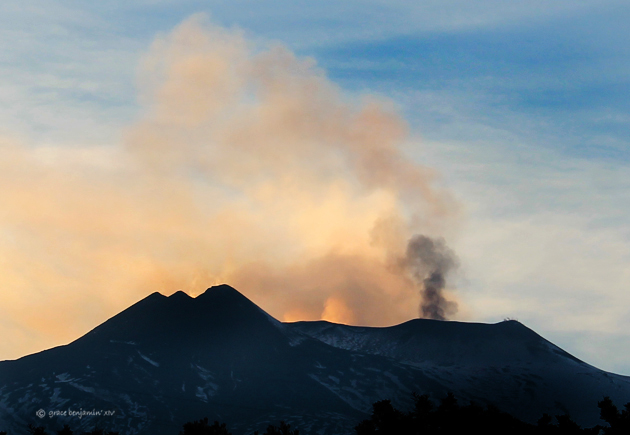
I have NO idea what this is. I’ve checked this in all my pics from Dec. and on - nothing like this in any pics.
What might it be? Any ideas?

*Going back to look over more pics*
I'm wondering if this might be the teeny-weeny start of a new crater or the waking of the old?
Alien beings? LOL? Ok, no I don't think that - but it IS something!
peace
Before you even start looking at the pics? This is not 'camera anomaly’ - I made sure and check first.
Fanfare over? Here goes:
I went out to try and get the ‘color‘ I was referring to earlier.
Well, I didn‘t. This isn‘t even close - even with the sunset or despite it, whatever.
But I did see something...else.

I have NO idea what this is. I’ve checked this in all my pics from Dec. and on - nothing like this in any pics.
What might it be? Any ideas?

*Going back to look over more pics*
I'm wondering if this might be the teeny-weeny start of a new crater or the waking of the old?
Alien beings? LOL? Ok, no I don't think that - but it IS something!
peace
edit on 9-1-2014 by silo13 because: (no reason given)
reply to post by silo13
I tried zooming in and still couldn't make it out. Do you have a telescope handy? That should resolve the object. Nice eye! But you probably know the mountain so well that even with the recent changes you can spot something a little out of place. Thanks for the mystery!
I tried zooming in and still couldn't make it out. Do you have a telescope handy? That should resolve the object. Nice eye! But you probably know the mountain so well that even with the recent changes you can spot something a little out of place. Thanks for the mystery!
pic linkreply to
post by silo13
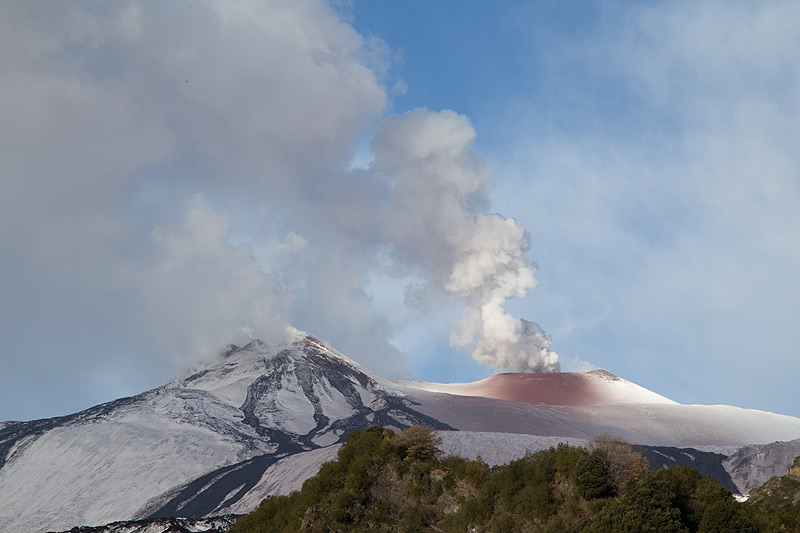
Was looking for that steam, didn't find it but is this that color ash ?
volcano discovery web site Etna
But then again maybe it does show in that pic ? Wind moving up and over the edge would draw steam, ash or smoke towards it, like the back of a truck ?

Was looking for that steam, didn't find it but is this that color ash ?
volcano discovery web site Etna
But then again maybe it does show in that pic ? Wind moving up and over the edge would draw steam, ash or smoke towards it, like the back of a truck ?
edit on 9-1-2014 by donlashway because: (no reason given)
edit on 9-1-2014 by donlashway because: (no reason given)
reply to post by donlashway
Great job! That's as close as anything I've seen yet - but - not in the pic you posted - I'm referring to the other on at the link.
I'm having a momentary problem with my computer - I'll repost the pic in a bit if I can grab it.
THANK YOU!
Great job! That's as close as anything I've seen yet - but - not in the pic you posted - I'm referring to the other on at the link.
I'm having a momentary problem with my computer - I'll repost the pic in a bit if I can grab it.
THANK YOU!
edit on 9-1-2014 by silo13 because: fix up
reply to post by Aleister
I've been trying to get some info from a couple of other people on the net who are religious Etna followers.
What I've heard back is they've seen it too - they don't know what it is - thinking maybe a 'wake up' and they're looking to compare pics too - sooooooooo I hope to have more info later!
Good to see you,
peace
I've been trying to get some info from a couple of other people on the net who are religious Etna followers.
What I've heard back is they've seen it too - they don't know what it is - thinking maybe a 'wake up' and they're looking to compare pics too - sooooooooo I hope to have more info later!
Good to see you,
peace
reply to post by silo13
This web cam shows a angle that looks like a much higher cone on the right edge of the main cone.
web cam
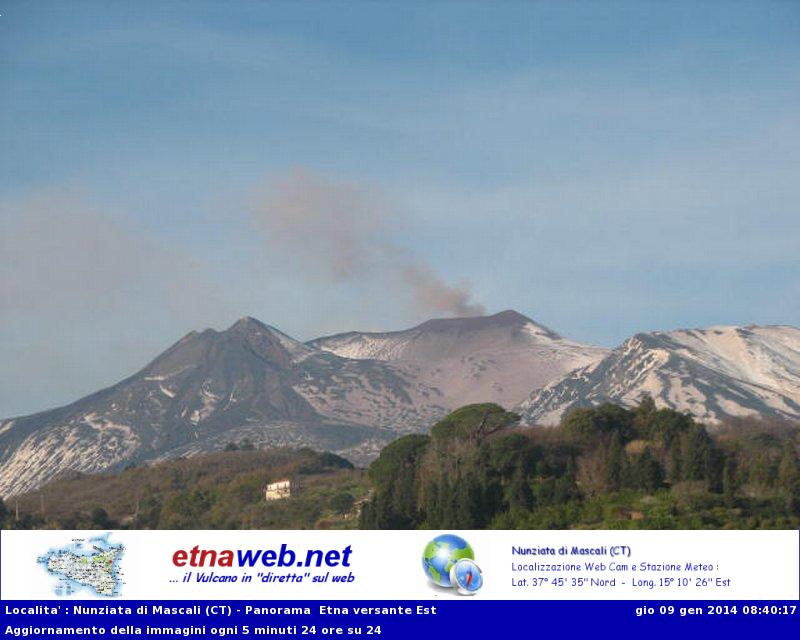
This one shows ash deposit that looks to have come from just that side.
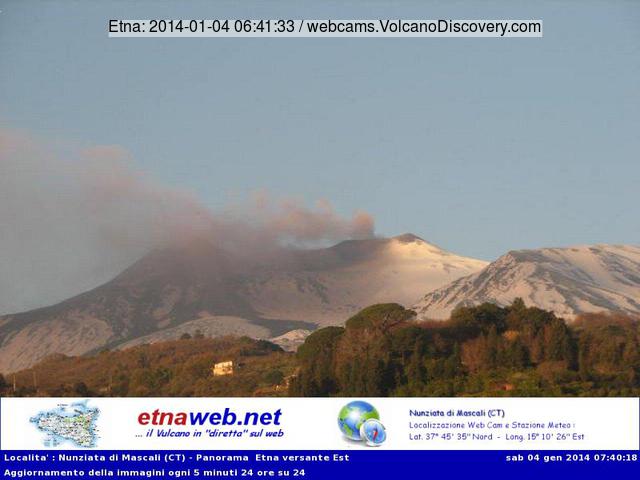
This web cam shows a angle that looks like a much higher cone on the right edge of the main cone.
web cam

edit on 9-1-2014 by donlashway because: (no reason given)
This one shows ash deposit that looks to have come from just that side.

edit on 9-1-2014 by donlashway because: (no reason given)
new topics
-
Nvm
General Chit Chat: 4 hours ago -
OK this is sad but very strange stuff
Paranormal Studies: 9 hours ago -
Islam And A Book Of Lies
Religion, Faith, And Theology: 11 hours ago
top topics
-
Sorry to disappoint you but...
US Political Madness: 13 hours ago, 13 flags -
OK this is sad but very strange stuff
Paranormal Studies: 9 hours ago, 7 flags -
Islam And A Book Of Lies
Religion, Faith, And Theology: 11 hours ago, 5 flags -
Nvm
General Chit Chat: 4 hours ago, 2 flags
active topics
-
Here we again... CHINA having mass outbreak of something
Diseases and Pandemics • 29 • : BeyondKnowledge3 -
Matthew Livelsberger said he was being followed by FBI
Political Conspiracies • 73 • : 38181 -
Islam And A Book Of Lies
Religion, Faith, And Theology • 5 • : BeyondKnowledge3 -
OK this is sad but very strange stuff
Paranormal Studies • 4 • : chiefsmom -
Musk calls on King Charles III to dissolve Parliament over Oldham sex grooming gangs
Mainstream News • 184 • : ufoorbhunter -
Can we be certain that Jesus Christ was born on December 25th?
Religion, Faith, And Theology • 35 • : covent -
What Is 'Quad Demic'? Mask Mandate Returns In These US States
Diseases and Pandemics • 41 • : Cracka -
Tesla Cybertruck Explodes in Front of Trump Hotel in Las Vegas
Mainstream News • 230 • : imitator -
Remember when Iraq invaded Kuwait
History • 31 • : Cracka -
Sorry to disappoint you but...
US Political Madness • 16 • : TzarChasm
